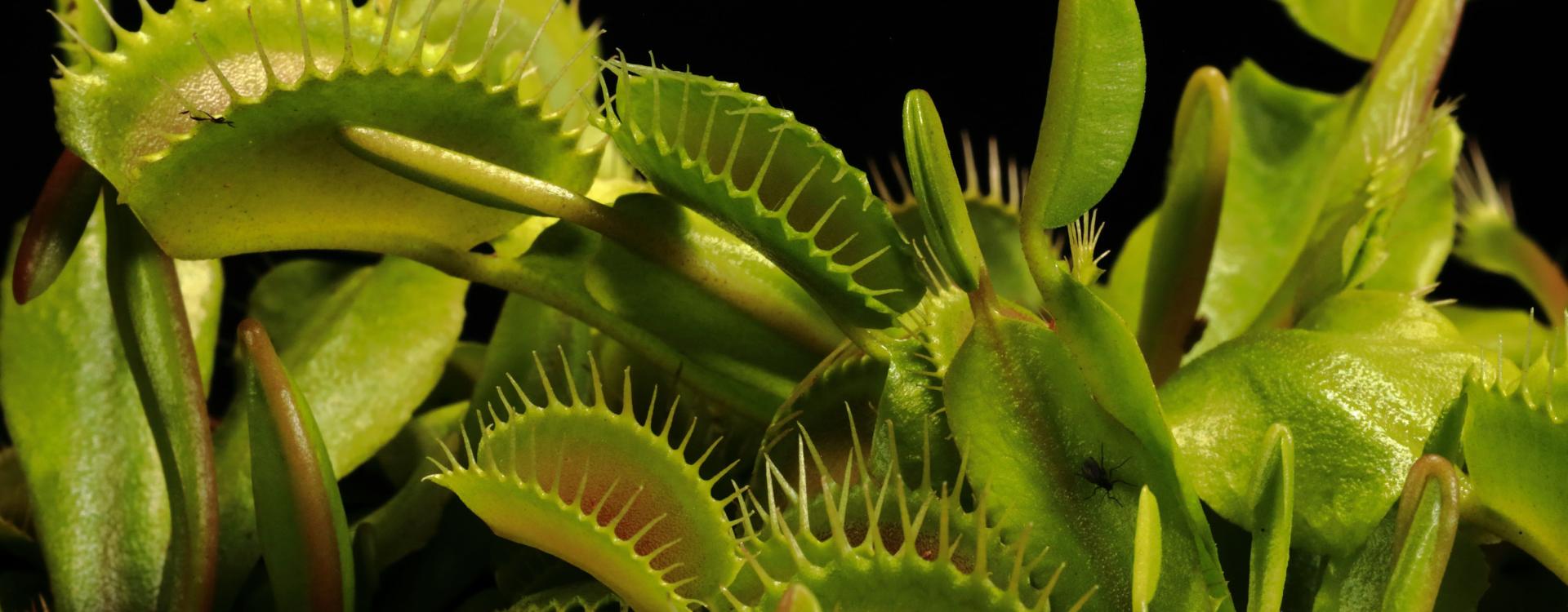
The venus flytrap is a quintessential mixotroph, obtaining nutrients through photosynthesis as well as predation. Photo Credit: Andi Superkern on Unsplash
A quick survey of life on Earth will usually yield two groups: those that produce their own nutrients and those that must get them from other lifeforms. Plants generally fall into the first category, called autotrophs, while animals and fungi are almost exclusively the second, heterotrophs. But digging deeper reveals a host of organisms that can do both: mixotrophs.
“You’d think an organism that can do both photosynthesis and heterotrophy has hit the metabolic jackpot,” remarked Holly Moeller, an assistant professor at UC Santa Barbara. “So it’s fascinating to think about what the limits are on that.”
Members of the Moeller lab carried out a three-year experiment to see how two strains of mixotrophs would adapt to changes in temperature and light level. The team found that one strain evolved to be less photosynthetic at higher temperatures, which may have implications for the climate. The results also support the idea that natural selection may have a stronger effect on organisms with less flexible characteristics. The findings appear in the journal Global Change Biology.
The authors were curious if mixotrophs would evolve to become more photosynthetic at higher temperatures over many generations, an inquiry with significance for climate change. “These organisms can be either carbon sources or carbon sinks depending on what process they’re relying on,” explained first author Michelle Lepori-Bui, a former National Science Foundation graduate fellow in the Department of Ecology, Evolution, and Marine Biology, now a marine water quality specialist at Washington Sea Grant.
Lepori-Bui wanted to know if the microbes would adapt to new conditions by simply altering their gene expression, or if they would evolve over many generations, accumulating permanent genetic changes. Previous studies on mixotrophs ran for only a few weeks, not enough time to identify actual evolutionary trends. Moeller and Lepori-Bui planned for an experiment on a much larger scale.
The whole study began in April 2018.
Three years later, they had data from 400 to 700 generations of microbes. Still, deciphering trends from the data was a challenge. “These mixotrophs are super complicated little beasts, and they don’t always want to give us their secrets easily,” Moeller said. The researchers noticed a general increase in heterotrophy at higher temperatures, particularly from the strain that always performed photosynthesis.
This suggests the climate crisis may change the role mixotrophs play in the global carbon cycle. Mixotrophy is more common than scientists had previously realized, especially among plankton in the nutrient-poor open ocean. If mixotrophs shift to be more heterotrophic, they will produce more CO2, which contributes to climate change. This could further raise temperatures and expand nutrient-poor regions of the ocean, creating a feedback loop. “So mixotrophs have the potential to be major players in the carbon cycle,” Moeller noted.
Moeller plans to continue investigating the role that phenotypic plasticity plays in evolutionary adaptation with bigger studies involving a wider variety of mixotrophs. Earlier this year, the team published a paper examining how becoming a mixotroph can affect a species’ competitive advantage in the game of life. “We’re building this broader theory piecemeal, one tedious experiment at a time,” she said.
“We barely even know how they do what they do in current conditions, much less what they’re going to do in the future,” Moeller said. “And yet it’s also abundantly clear that this has implications for how they relate to other species and the carbon cycle.”